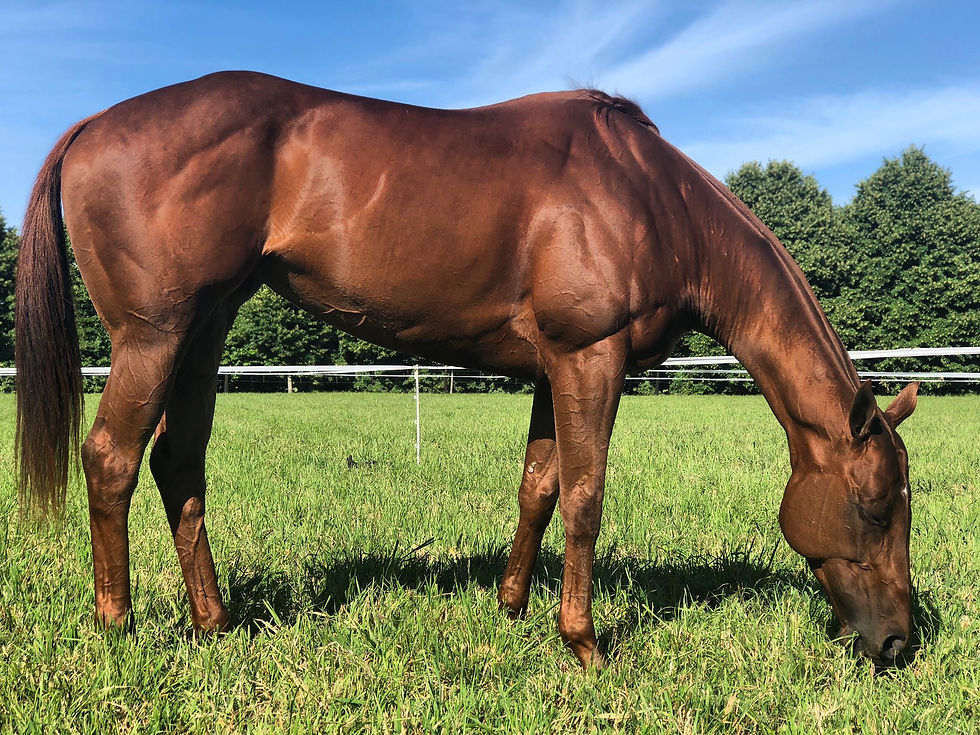Hooves: A Beginners Guide to Maintenance and Care
- th equine
- Feb 19, 2024
- 3 min read
Updated: Apr 11, 2024
The hooves are one of the most important structures of the horse, since they support its entire weight. Also, an alteration in the hooves structure or balance can affect and cause problems in the rest of the horse’s body. Therefore, gaining a basic understanding is crucial for horse owners to know when it's time to intervene and/or call in a professional, since a misstep in hoof care can lead to serious injuries, making this knowledge essential.
In this comprehensive guide, we'll delve into the world of horse hooves, learning about their structure and anatomy, as well as the basics of hoof maintenance and care.

Normal Hoof Anatomy
Like in all structures of the horses it is important to now the normal appearance to be able to identify any alterations.
Outside view

The coronet is from where the hoof grows, this is very important, because lesions in this region affect the pattern of growth of the hoof.
The frog is the most elastic, moist and soft part of the hoof. This part is very sensitive and we should be very careful when trimming it.
Palmar view

In this image you can see the structures and sections you should be able to identify. This important for communicating with your farrier and vet. The white line is where the inner wall of the hoof combines with the outer wall of the hoof and it is the wall that should support the weight of the horse and not the sole or the frog.
Why Do We Need to Trim Horse Hooves?
Domesticating horses removed them from their natural, wild environments, where hooves naturally wore down. In pastures, boxes, or paddocks, horses lose the opportunity for natural wear, necessitating human care. In the wild, horses with hoof problems face isolation or predation, limiting the passage of poor hoof traits to offspring. Domestication, however, hasn't prioritized strong hooves, leading to the need for regular care to prevent diseases and lameness.
Factors That Can Affect Hoof Growth
The factors that can affect hoof growth include feeding, breed, genetics, wear and tear, and environment.
It is proven that high quality diets improve hoof growth and quality. There are also a lot of supplements that you can give to improve hoof quality. However, when they are good supplements you usually have to trim the hooves more often.
Also, in more humid environments, hooves tend to grow faster.
Daily Care – Inspecting and Cleaning Hooves
Depending on their living arrangements, daily inspection and cleaning are essential for maintaining hoof health, especially when they live in boxes or small paddocks.
In this process we start by looking at the hoof when it is resting on the floor. However, we should make sure that the horse is in a good stance and position, because if the horse is not well squared this could give us a wrong idea of the hoof structure.
Then, we pickup the hand/foot. For that, learning to handle a horse properly is essential and one of the most basic competences is asking them for a hand or feet.
Then, we begin cleaning the hoof from the heels to the toe, avoiding that the hoof pick moves toward the soft part of the hoof (frog). After cleaning, we can fully inspect the palm.
Maintenance Care
Besides daily inspection and cleaning, there are some regular measures to implement.
Trimming Hooves Every 6 to 8 Weeks
Should be performed by a farrier every 6 to 8 weeks, depending on hoof growth and wear.
Usually the toe grows faster than the heels and always remember always be very careful when trimming the frog.
Professional Evaluation
Trimming of the hooves should always be done by a farrier. Farriers are trained professionals that can assess hoof balance and angles and make any corrective alterations necessary, ensuring that there is an even weight distribution for overall health.
By understanding the significance of balanced hooves, owners can contribute to their horse's overall well-being, preventing hoof-related diseases and ensuring optimal performance. Imbalances can lead to lameness and other musculoskeletal issues.
The world of horse hooves is extremely vast, there are several schools and ways to handle hoof related problems. With us you will learn why regular maintenance is crucial for your equine companion's health. From daily care routines to the role of professional farriers, this guide empowers horse owners with essential knowledge. Keep your horse's feet balanced and healthy for a happy and active life and send us a message if there is any topic that you would like us cover!
See you next week,
Isabel & Stephan


Comments